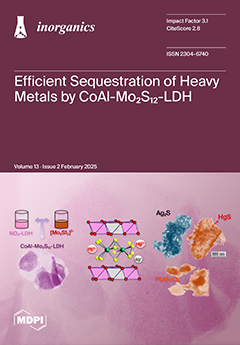Two new Co(II) coordination compounds
viz. [Co(H
2O)(bz)
2(μ-3-Ampy)
2]
n (
1) and [Co(4-Mebz)
2(2-Ampy)
2] (
2) (wherebz = benzoate, 4-Mebz = 4-Methylbenzoate and Ampy = Aminopyridine) were synthesized and characterized via elemental (CHN), electronic spectroscopy, FT-IR spectroscopy, and thermogravimetric analysis (TGA). The molecular structures were determined by single-crystal X-ray diffraction analysis, inferring that compound
1 crystallizes as a
3-Ampy bridged Co(II) coordination polymer, whereas compound
2 crystallizes as a mononuclear Co(II) compound. Compound
1 unfolds the presence of N–H⋯O, C–H⋯O, O–H⋯O, C–H⋯N and aromatic π⋯π interactions, while for compound
2, N–H⋯O, C–H⋯O, C–H⋯C and C–H⋯π interactions are observed. Both the compounds showcase scarcely reported chelate ring interactions involving the benzoate moiety (chelate ring⋯π in
1 and N–H⋯chelate ring in
2). We also conducted theoretical evaluations comprising of combined QTAIM/NCI plot analysis, DFT energy calculation and MEP surface analysis to analyze the supramolecular interactions present in the crystal structures. As per QTAIM parameters, the predominance of π-stacking interactions over hydrogen bonds in stabilizing the assembly in compound
1 is affirmed. Likewise, in compound
2, both hydrogen bonding (HBs) and C–H⋯π interactions are deemed pivotal in stabilizing the dimeric assemblies. The in vitro antiproliferative activities of compounds
1 and
2 were performed against Dalton’s lymphoma (DL) cancer cell lines through cytotoxicity and apoptosis assays, showcasing higher cytotoxicity of compound
1 (IC
50 = 28 μM) over compound
2 (IC
50 = 34 μM). Additionally, a molecular docking study investigated the structure–activity relationship of these compounds and allowed an understanding of the molecular behaviour after treatment.
Full article





